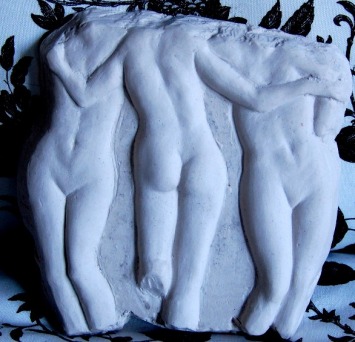
date of the original: mid-3rd century B.C.
provenance of the original: now in the Louvre, Paris
description: Three nude female figures entwined executing a dance. Heads and feet missing. Plaster replica; marble original.
|
|
 Hellenistic Greek. date of the original: mid-3rd century B.C. provenance of the original: now in the Louvre, Paris description: Three nude female figures entwined executing a dance. Heads and feet missing. Plaster replica; marble original.
1 Comment
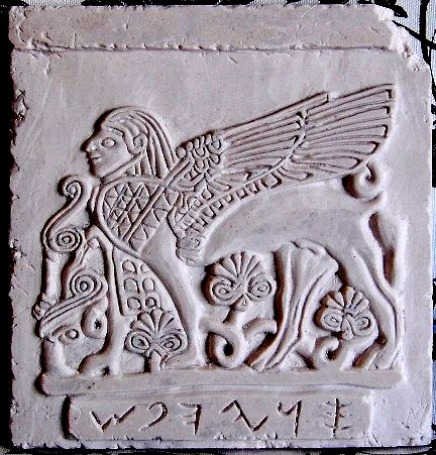 As the title implies, this original was carved in ivory. date of the original: 9th-8th century B.C. provenance of the original: Fort Shalmaneser, Kalhu (Nimrud), Iraq; now in the British Museum, London This is not an exact replica. The original was used as an inspiration, one might say. There was no inscription, for example. Phoenicians spoke the Phoenician language, which belongs to the group of Canaanite languages in the Semitic language family. And that's basically why I have no idea what that says. Phoenician work on ivory objects have been found all around the Mediterranean, including furniture such as chairs, thrones, footstools and beds. Phoenicia , Canaan or Kana'an, what is now modern day Lebanon, was an ancient civilization centered in the north of ancient Canaan, with its heartland along the coastal regions of modern day Lebanon, extending to parts of Israel, Syria and Palestine. Etruscan, then Phoenician, after Latin, Hebrew, Greek (Archaic, Transitional, Classical, and currently Hellenistic) and next where??. My god, man...don't you wonder..will he explode? (hint: yes, stay tuned) 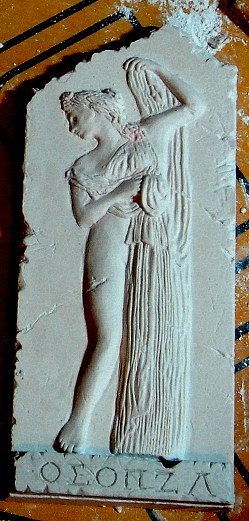 This is fashioned after Callipigia Venus, Hellenistic art, circa 200 B.C. I will be brutally honest. I do not like this one that much at all. Now I will make an excuse. I didn't have the proper carving tools. Update: I now have the proper carving tools. Upshot: no more excuses! Anyway, what do I know? My wife likes this one better than the wrestlers. I think she's just more subject oriented. I'm style oriented. If it's executed well the subject could be of a latrine for all I care. step 1 My goal here was to do a faux antique ruin or semi ruin. The subject is a Greek bas relief dated 500 B.C. In the photo at left is shown a plaster mold cast over a rough clay model. There's no photo of the model but you can see the remnants on the board beneath the plaster was cast onto. I had to make sure there were no undercuts so a new plaster model can be cast from it. The final mold will be rubber and so the new plaster model can have undercuts where needed and will be carved to greater detail than the clay ever could, especially at this size, which is 8" x 10" step 2 This is the new plaster model cast from the plaster mold. It always helps to brace yourself when first seeing step 2, as it always looks like total crap at this stage. Elements are all bigger than they need to be because there is no adding on like you can with clay. Carving in plaster is similar to sculpting in marble in the sense that if you run out of material there is no adding on. step 3 Having worked on the figure on the left for a while restores hope that all is not lost and there may be hope yet. Model complete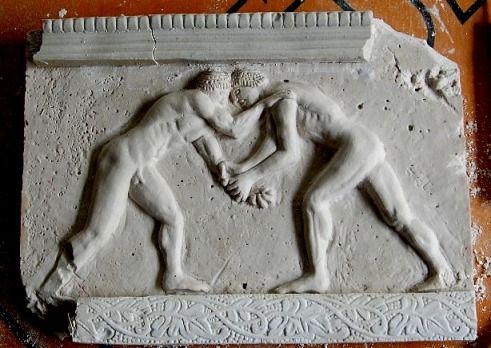 Final model. The cornice work was cast and added separately. Rubber mold Here is shown the model with three coats of Smooth-On PMC724. Momentarily a plaster mother mold will be formed over this so that the rubber portion of the mold will retain its proper shape when casting. The rubber and the mother mold are two separate items. The rubber will slip out of the mother mold and then be peeled off the casting. Ready for casting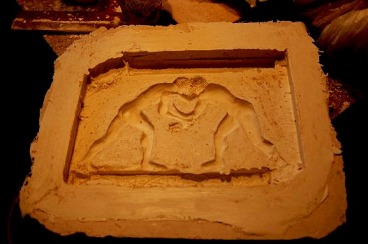 Here is the rubber mold sitting inside its plaster mother mold ready for some concrete. |
Archives
October 2018
Categories
All
|